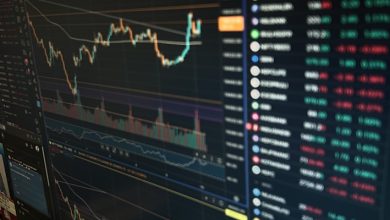The Role of Automated Market Makers (AMMs) in DeFi

- Understanding the basics of Automated Market Makers (AMMs)
- The evolution of AMMs in the DeFi ecosystem
- Comparing AMMs to traditional market-making strategies
- The benefits of using AMMs for liquidity provision in DeFi
- Exploring the challenges and risks associated with AMMs
- The future outlook for AMMs in decentralized finance
Understanding the basics of Automated Market Makers (AMMs)
Automated Market Makers (AMMs) are a crucial component of the decentralized finance (DeFi) ecosystem. These algorithms facilitate the creation of liquidity pools that enable users to trade digital assets without the need for traditional order books. By providing liquidity to these pools, users can earn fees in return for their participation.
One of the key features of AMMs is their ability to automatically determine asset prices based on a predetermined mathematical formula. This eliminates the need for an intermediary to match buyers and sellers, making trading more efficient and cost-effective. Additionally, AMMs are designed to be non-custodial, meaning users retain control of their assets throughout the trading process.
AMMs operate on the principle of constant product market-making, where the product of the quantities of two assets in a pool remains constant. This mechanism ensures that the price of an asset adjusts according to supply and demand, allowing for seamless trading at any time. Furthermore, AMMs are highly resilient to manipulation and provide a high level of transparency to users.
The evolution of AMMs in the DeFi ecosystem
Automated Market Makers (AMMs) have undergone significant evolution within the decentralized finance (DeFi) ecosystem. Initially, AMMs were primarily used for providing liquidity in trading pairs by algorithmically setting prices based on the ratio of assets in a pool. As DeFi continued to grow in popularity, AMMs became a crucial component in facilitating decentralized exchanges and enabling users to trade assets without relying on traditional intermediaries.
Over time, AMMs have evolved to incorporate various features and functionalities to enhance their efficiency and effectiveness in the DeFi space. One notable development is the introduction of different types of AMMs such as Constant Product Market Makers, Constant Sum Market Makers, and other innovative models that offer unique advantages depending on the specific use case.
Furthermore, AMMs have also seen improvements in terms of scalability and interoperability with other DeFi protocols. This has enabled AMMs to seamlessly interact with a wide range of decentralized applications, allowing for more complex trading strategies and enhanced liquidity provision across different platforms.
As the DeFi ecosystem continues to mature, the evolution of AMMs is expected to continue, with further advancements in technology and protocols. This ongoing innovation will play a crucial role in shaping the future of decentralized finance, providing users with more opportunities to participate in open, permissionless financial systems that are resistant to censorship and control.
Comparing AMMs to traditional market-making strategies
Automated Market Makers (AMMs) have gained significant traction in the decentralized finance (DeFi) space due to their innovative approach to liquidity provision. When comparing AMMs to traditional market-making strategies, several key differences emerge that highlight the unique benefits of AMMs in DeFi.
One of the main advantages of AMMs is their ability to operate without the need for human intermediaries. This automation not only reduces the costs associated with market-making but also enables AMMs to provide liquidity around the clock, without the limitations of traditional trading hours. Additionally, AMMs are accessible to anyone with an internet connection and a compatible wallet, democratizing access to liquidity provision in DeFi.
Another key difference between AMMs and traditional market-making strategies is the pricing mechanism used. While traditional market makers rely on order books to match buyers and sellers at specific prices, AMMs use algorithms to automatically adjust asset prices based on supply and demand. This constant price adjustment mechanism ensures that AMMs can provide liquidity for a wide range of assets, even those with limited trading volume.
Furthermore, AMMs are known for their ability to handle large trades without causing significant price slippage. This is achieved through the use of smart contracts that pool assets from multiple liquidity providers, allowing traders to execute trades of any size without impacting the market price. In contrast, traditional market makers may struggle to execute large trades without moving the market price significantly.
Overall, the unique features of AMMs make them an attractive option for liquidity provision in DeFi. By automating the market-making process, adjusting prices dynamically, and facilitating large trades with minimal slippage, AMMs offer a more efficient and accessible alternative to traditional market-making strategies.
The benefits of using AMMs for liquidity provision in DeFi
Automated Market Makers (AMMs) offer several benefits for liquidity provision in DeFi platforms. One of the key advantages is the ability to provide continuous liquidity without the need for traditional order books. This means that users can easily trade assets at any time without worrying about finding a counterparty for their trades.
Another benefit of using AMMs is the ability to earn passive income through liquidity mining. By providing liquidity to a pool, users can earn trading fees and other rewards in the form of governance tokens. This incentivizes users to contribute to the liquidity of the platform, ultimately leading to a more efficient and liquid market.
Additionally, AMMs are decentralized and permissionless, which means that anyone can participate in liquidity provision without the need for approval from a central authority. This opens up opportunities for individuals to earn income and participate in the DeFi ecosystem without facing barriers to entry.
Exploring the challenges and risks associated with AMMs
Exploring the challenges and risks associated with Automated Market Makers (AMMs) in the realm of Decentralized Finance (DeFi) is crucial for understanding the complexities of this innovative technology. One of the main challenges with AMMs is impermanent loss, which occurs when the value of assets in a liquidity pool diverges significantly. This can lead to losses for liquidity providers, especially in volatile markets.
Another risk to consider is the potential for smart contract vulnerabilities, which can expose users to security breaches and financial losses. It is essential for developers to conduct thorough security audits and implement robust protocols to mitigate these risks. Additionally, the lack of regulation in the DeFi space poses challenges in terms of investor protection and accountability.
Furthermore, the reliance on algorithmic trading and automated processes in AMMs can lead to issues such as front-running and price manipulation. These practices can undermine the integrity of the market and erode trust among participants. It is crucial for DeFi platforms to implement safeguards and transparency measures to prevent such manipulative behaviors.
The future outlook for AMMs in decentralized finance
The future outlook for AMMs in decentralized finance looks promising as these automated market makers continue to gain popularity within the DeFi space. With their ability to provide liquidity without the need for traditional intermediaries, AMMs are revolutionizing the way trades are executed on decentralized exchanges.
One of the key advantages of AMMs is their ability to reduce slippage, which is the difference between the expected price of a trade and the actual price. By using smart contracts to automatically adjust token prices based on supply and demand, AMMs help to ensure that traders receive fair prices for their transactions.
As the DeFi ecosystem continues to grow, AMMs are likely to play an increasingly important role in providing liquidity for a wide range of assets. This will help to attract more users to decentralized exchanges and further drive the adoption of DeFi protocols.
Furthermore, advancements in technology such as Layer 2 solutions and cross-chain compatibility are expected to enhance the capabilities of AMMs, making them even more efficient and user-friendly. This will open up new opportunities for AMMs to expand their reach and support a broader range of assets and trading pairs.
In conclusion, the future of AMMs in decentralized finance looks bright, with these automated market makers poised to become an integral part of the DeFi ecosystem. Their ability to provide efficient and secure liquidity for a wide range of assets makes them a valuable tool for traders and investors looking to participate in the rapidly growing DeFi space.



